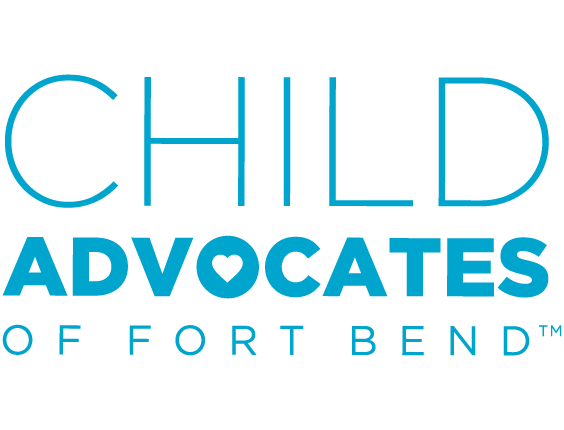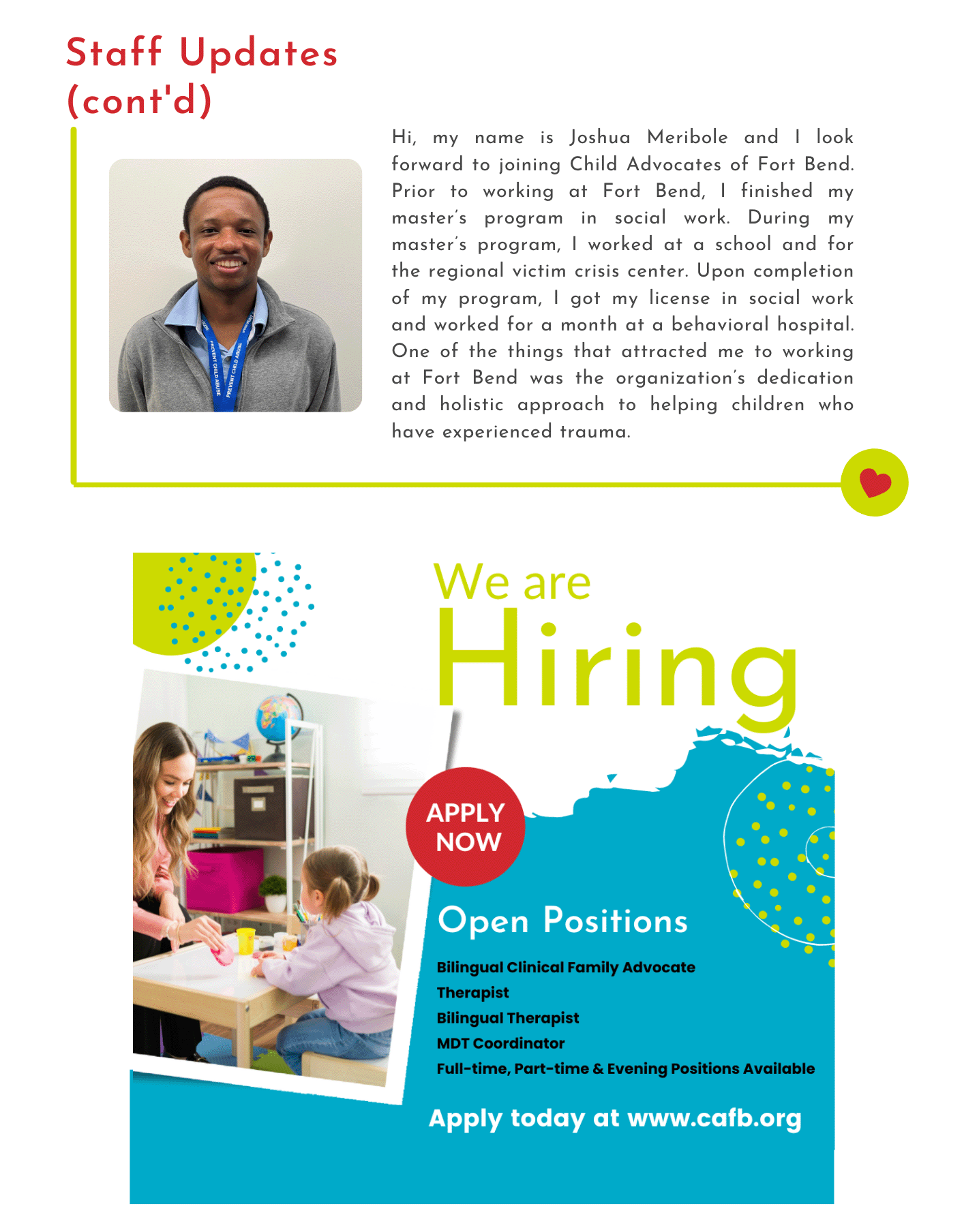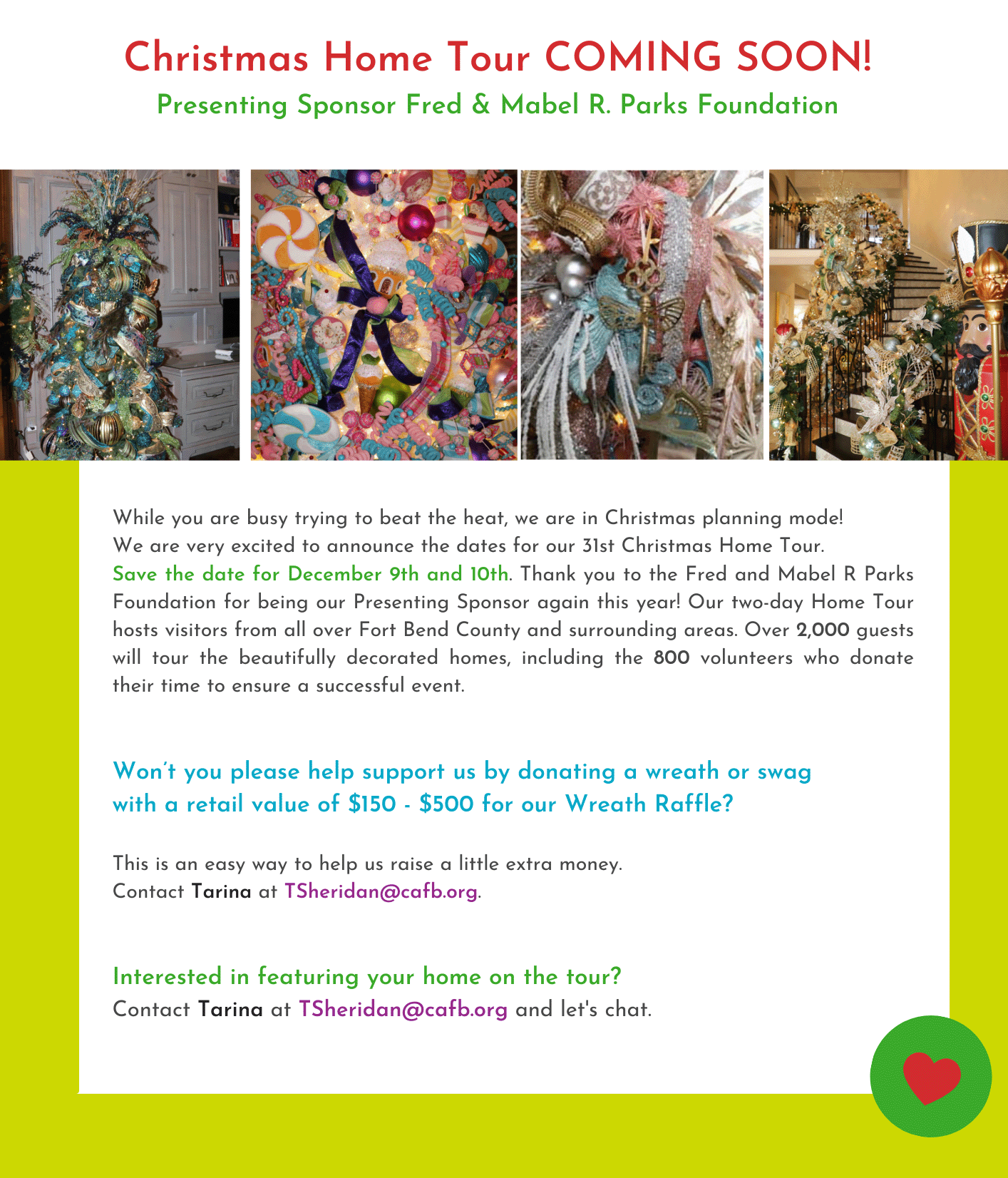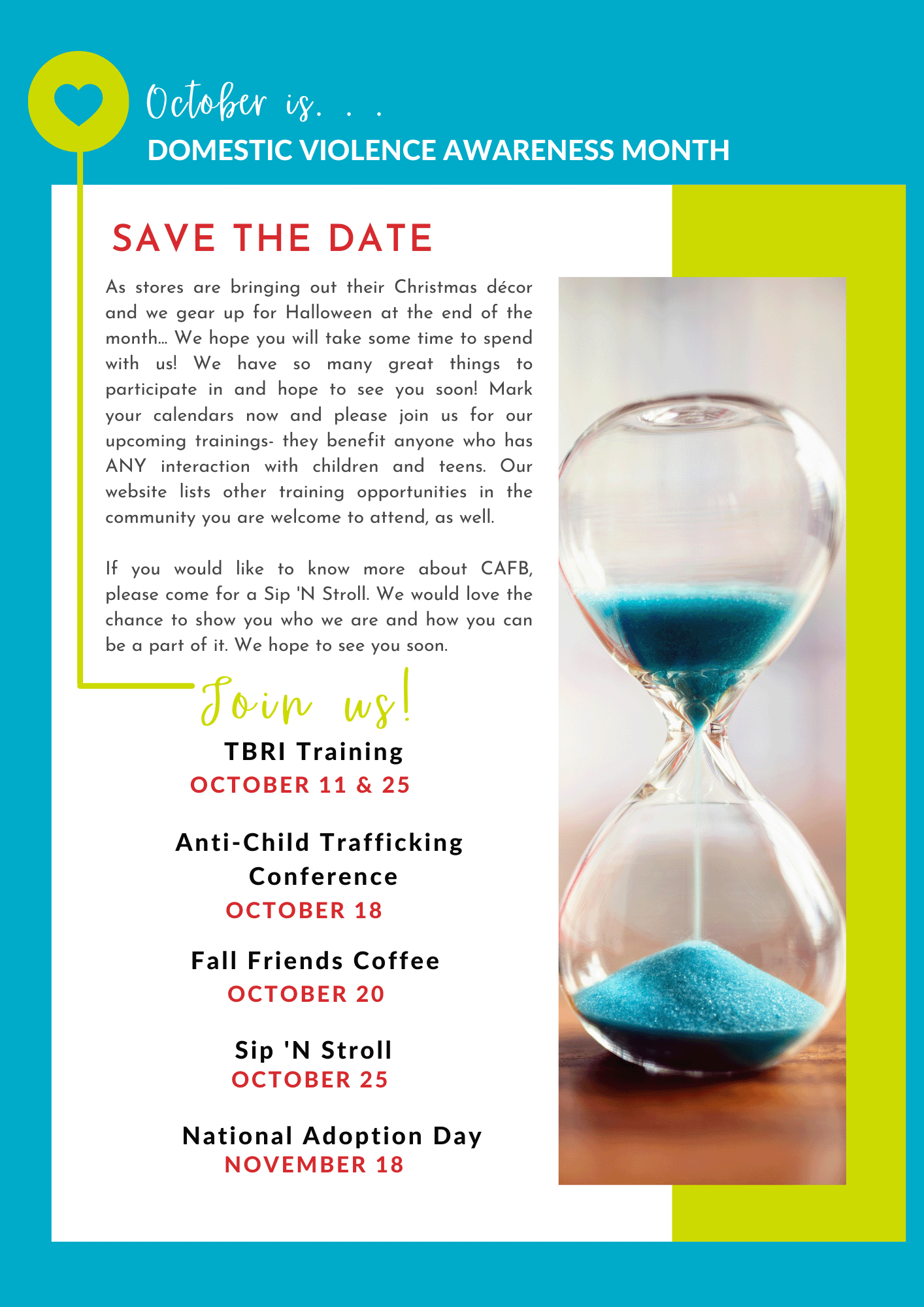Volume 10
OCTOBER 2022
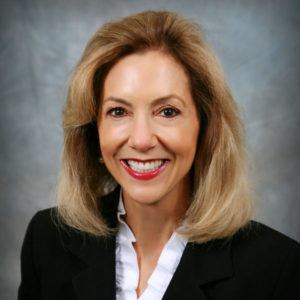
Welcome to our October Newsletter,
We are now officially in Fall which conjures up images of pumpkins and baking, sweaters and cozy surroundings with holidays just around the corner. For our kids, the school year is in full swing and they are a third of the way through the Fall Semester already. The return to in-person classroom instruction has been a return to normalcy for many of our children. But as we know the pandemic had profound effects on children’s academic learning with a majority of children suffering learning gaps in math and reading. Symptoms of mental illness have skyrocketed for children across the community, but can even be more pronounced for our children who are already experiencing the impact of trauma from their abuse or neglect. It is so important that we stay focused on these children’s heightened needs and how to help them cope, heal and experience success, whatever that looks like for each child. We also know that during the pandemic the incidence of domestic violence increased by over 30% in the Greater Houston region. For children in abusive or violent homes where a parent or caregiver is experiencing domestic violence, life is that much more challenging and unsafe. They may feel personal responsibility; they may assume a caretaker role protecting the parent victim or their siblings; they may be physically abused as well; and they certainly experience trauma from their exposure to domestic violence and the emotional toll it takes on a young child. October is Domestic Violence Awareness & Prevention Month. Inside our newsletter we will share resources and stories to inform and educate our readers so that you can know what to do in domestic violent situations. Inside, you will hear about our very successful Voices For Children Breakfast, be introduced to our staff members, read about our wonderful staff and volunteers who work so hard to transform the lives of children and families, and get a sneak peak at upcoming events so you can mark your calendars. We’d love to see you at an event!
Thank you for all you do to advocate, volunteer, donate and partner with us so that we can end the cycle of abuse for children in Fort Bend County. We are making great strides because of you and we are most appreciative.
For the Children’s Sake,

Ruthanne Mefford, CEO
Keeping you informed on our mission:
Strengthen the child’s voice, Heal the hurt, and Break the cycle of abuse and neglect for children in Fort Bend and surrounding counties.
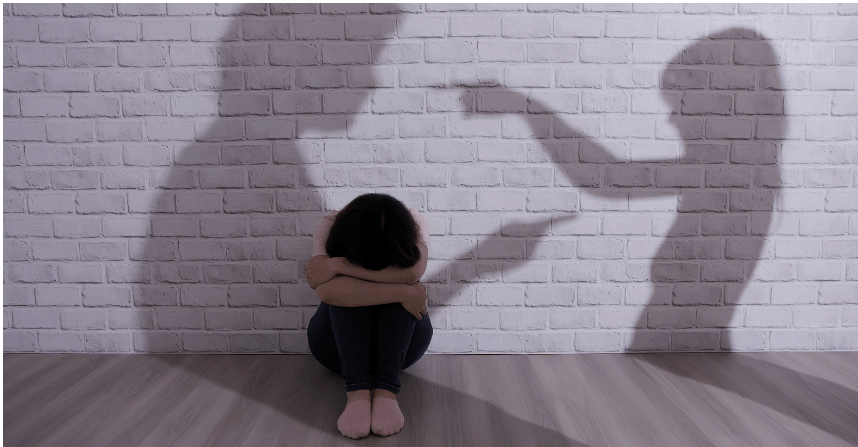
Domestic Violence: The relationship between Domestic Abuse and Child Abuse
Written by Dana Mersiovsky and Lindsey Castellanos
The author of When Violence Begins at Home: A Comprehensive Guide to Understanding and Ending Domestic Abuse, K.L Wilson says, “Children raised in violent homes learn many lessons. They learn how to keep family secrets. They learn how to get what they want through aggression and manipulation. They learn that people who love you hurt you. They learn that violence, albeit painful, is an acceptable part of life.”
Neither domestic abuse nor child abuse is an isolated event. Both occur with some regularity, often increasing and becoming more serious. Adults who were abused as children have an increased risk of abusing their children, and adults who grew up in a violent home are more likely to become perpetrators or victims of domestic violence. For several reasons, including shame, secrecy, and isolation, both types of abuse are underreported.
An estimated 15.5 million children in the U.S. live in a household where partner violence has occurred at least once in the last year, with 7 million of those children witnessing severe violence. Exposure to that kind of trauma can harm children of all ages. According to the Centers for Disease Control, adverse childhood experiences are linked to:
- Risky health behaviors
- Chronic health conditions
- Shorter life expectancy
A child’s best hope is to bond with other caregivers and experience caring and compassionate relationships through them.
“Caregivers and providers need to support and facilitate healthy, positive, nurturing relationships with safe adults, whether that’s the nonviolent caregiver or other family members involved with caring for the child. We know from our experience—and there’s a host of literature and research to support it—that when kids are able to be grounded in these kinds of relationships it’s the single most important indicator for them to be able to heal and thrive,” emphasizes Neena McConnico, MD, director of the Child Witness to Violence Project at Boston Medical Center.
What can we do? How can we help?
Children need to know that it is never okay for someone in their home to be hurt. It is estimated that 40% of children who are in the home where domestic violence has occurred will experience some type of abuse themselves. Sometimes children witness acts of violence, but don’t have marks and bruises themselves. Many adult victims of domestic violence do not fully realize that their child being present, even if not a victim, is a trauma to their child and can be considered abuse.
First, parents and caregivers should seek support for their situation. Domestic Violence can include physical, emotional, financial, or sexual abuse. The dynamics of domestic violence are complicated, and parents need support in order to leave an abusive situation. Fort Bend Women’s Center is available 24/7 at 281-342-4357 to assist women and men who are in an abusive situation.
What can we teach children about domestic violence?
- First, we want to teach children the safety rules. These rules help adults keep children safe. We have a link to the safety rules that Monique Burr Foundation – Child Safety Matters. The rules can be applied to a lot of different situations which is a great strategy for children. It’s easy to remember.
- If someone is being hurt or threatened in your home tell a “Safe Adult”. A safe adult is someone who a child can go to if they don’t feel safe, keeps the safety rules, and is available to them regularly.
- Talk with your teenager about relationships. Teen dating violence is a serious issue and teens need to know what healthy relationships are and what constitutes an unhealthy relationship. “Love Is Respect” is a great resource for teens to learn about dating, dating violence, and how to spot red flags.
DomesticShelters.org and Houston Police Department-Family Violence Unit
A Child’s Journey Through CASA
Written by Krystal Vann
The grief and trauma our kids experience could only be expressed by them personally, but this a “glimpse” of what our youth might endure and how we, as CASA staff and volunteers, do our best to support them through the Child Advocates of Fort Bend’s CASA Program.
Five minutes. That’s what you get. If that. The caseworker grabs a black trash bag and gives it to me. What about I supposed to do with this? “Grab whatever you can and let’s go.” The running list of my possessions rolls through my mind. Nothing comes to mind. Everything comes to mind. I guess I’ll grab some clothes, my favorite stuffed animal, shoes… I grab a few things scattered around just because I feel like I should. Then I leave my home. I hear screaming and crying. I hear sirens. But it doesn’t matter because I’m numb to all of it. I don’t know where I’m going next. I don’t know if I’m relieved or terrified. I just go.
When a youth comes through our doors, we don’t know everything about what they’re carrying with them. They may have raised their younger siblings for years, they may have stolen food or groceries so their siblings didn’t go hungry. We don’t know all the details about the extent of their abuse and the impact it has had on them. Sure, we have an affidavit or forensic interviews, but that’s just a small piece of their story. We are here to hear the rest of their story and hopefully ease the trauma and give them hope.
When the affidavit comes across our Advocacy Specialists desk, the first thing we do is begin to puzzle together the child we are advocating for and their family. We will map out who the connections are for the child, good and bad. The next step in the process is services. How can we serve this child to help them heal their hurt?
Trust Based Relational Intervention (TBRI) is one of the tools we use to connect and empower our youth. At our first visit and every interaction after, we are intentional about everything we do from bringing snacks and games to playfully engaging with them. We focus on connecting and learning more about their lives and story. We sift through the details to find who they are connected to and how. We learn their likes, their interests and sometimes even fears, all while playing Uno.
It smells weird here. I have a bunk bed and there’s another girl that sleeps in my room. My stuff is slipping out of the trash bag in the corner, partially unpacked. The lady here says her name is Jan. She smiles a lot. It makes me uncomfortable. She started moving my things into drawers and I yelled at her. I don’t know why I yelled at her, but it made me angry that she was touching my stuff. My heart was beating fast, and my stomach hurt. It just came out. “It’s okay. You’re safe here.” That’s what she said. But I don’t feel safe. I don’t know what I feel, except scared, like when those guys would come over at night. She told me that my CASA Volunteer would visit me. Whatever that means. I hear them talking right now. She came in and it was weird at first, but she asked me if I wanted to play a game. We played Uno and she didn’t let me win. The next round I did. I smiled, a little.
CASA Volunteers are appointed to cases to Strengthen The Voice of their assigned CASA child. After 45+ hours of extensive training, they visit monthly to make sure their CASA child’s needs are met educationally, socially, mentally, culturally or in any other capacity needed. They then summarize their advocacy into a multi-page court report. This report goes to the judge and all the partners currently involved in this CASA child’s journey. The recommendations made within these reports are followed-up with action steps by these partners to ensure that this child does not fall through the cracks. We use the tools and approaches of “Collaborative Family Engagement” to cultivate relationships with families, friends or other potential connections for the child. We then convene in meetings just for this child and their family in hopes of building a lifetime support network that allows our CASA child to break the cycle in their family.
As Advocacy Specialists continue to supervise their CASA Volunteers, they simultaneously put together programs throughout the year to support CASA Children’s needs. Starting with the Infant and Toddler Program (ages 0-5), we recognize that the early years are critical in early childhood and neurological development. We monitor our CASA children’s health and medical care, cognitive and emotional development and address any issues that may arise with our partners and the family.
The next age range programming is called NEST. This program is designed for elementary and early middle school children (ages 6-13). We work to build strong foundations in education, health, and social interactions.
Our Wings program focuses on youth ages 14+. We work with youth to develop individualized education plans tailored to their needs, plan for college or higher education or a sustainable career path and prepare for successful independent living when they age out of the foster care system. WINGS focuses on assisting youth to acquire life skills, plan and achieve educational goals, develop a transitional living plan, and create a support system of positive adults outside of the foster care system.
Everyone here is like me. I’m at a summer program my CASA Volunteer, Anne, told me about. Maybe it was called Wings? All the other kids here don’t live at home either. I almost feel normal. We’re learning about so many things. I didn’t know that you’re supposed to boil the water before you put the spaghetti in it. I didn’t even know how to turn on the stove and I’m 16. I really like Shianne. She makes me laugh. If I had a cell phone, I would call her. She said she’s a Peer Mentor. She said she’s been through foster care and that things get better. Now were learning about PAL classes, which stands for Preparation for Adult Living. I guess I get benefits for being a foster kid. I’m a foster kid. I almost forgot.
As an Advocacy Specialist, we include our CASA youth in any programming we can. Whether it’s our celebratory Incentive Program, weeklong summer programs, mail out boxes or graduation events, we find a way to reach our CASA children. Even if the child is placed out of state, we work to ensure they are safe and thriving by requiring our CASA Volunteers to visit in person. To supplement visits, we also have our Courtesy CASA Workers hop on a plane or in their car to visit children outside of Fort Bend County and even out of state.
It feels different now. Jan is teaching me to cook. Serena is one of my closest friends, even when she gets on my nerves because we share a room. Anne visits me a couple times a month, and she always plays basketball with me, even though she always says she is bad at it. She really is though. I feel scared sometimes still, but not all the time anymore. I’m not failing in school anymore, but I still make a lot of C’s. Ms. Anne says it’s ok and that I’m doing my best. I’m trying. I miss my mom, but I get to see her every week. She said she’s clean. I hope she stays clean. My therapist said I can’t control her, just myself. I’m trying to not be so angry… Anne told me that she thinks I would be a good Peer Mentor for the Wings program next year. I think I’m gonna do it. I don’t know what’s next but I’m starting to remember what it feels like to not be numb.
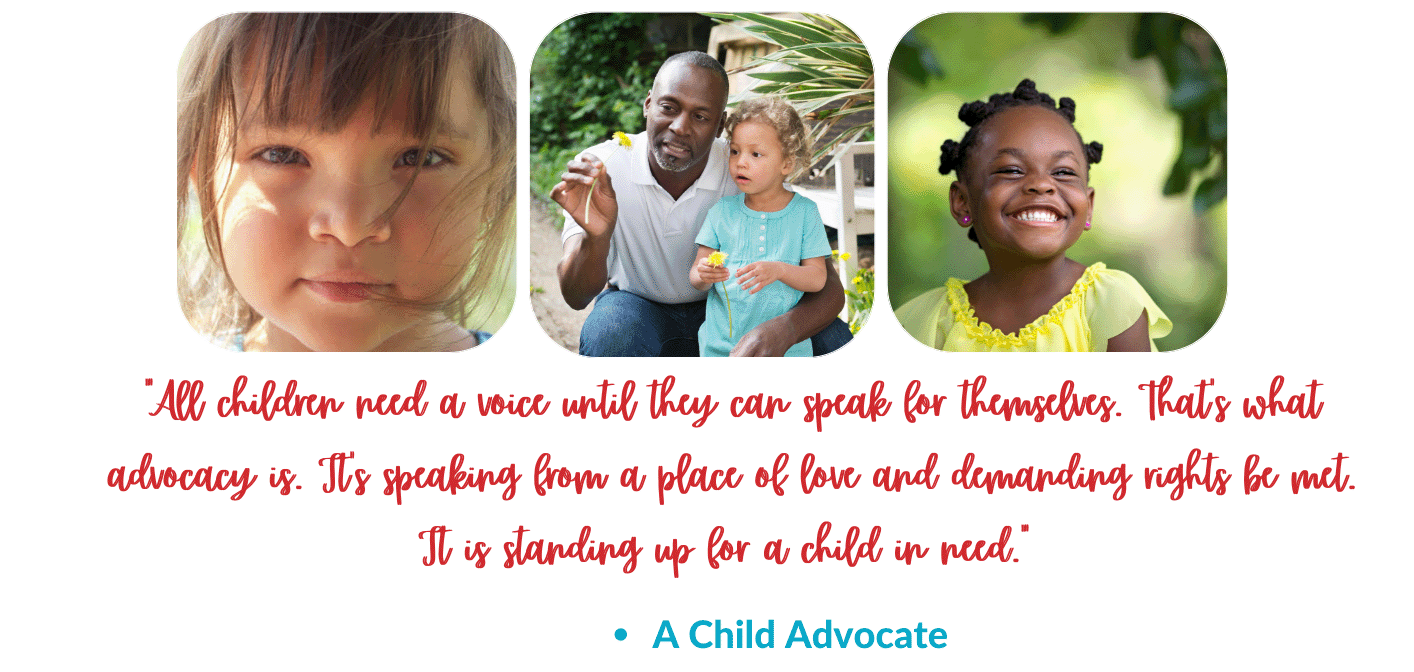
Child Abuse Prevention,
It’s easier than you think!
Written by Lindsey Castellanos
I spend a lot of time in the community, talking about child abuse. Some people are overwhelmed by the topic. It’s too much. No one wants to imagine it happening to their kids. Of course not, we love our kids. We want them to be safe and maintain their innocent, carefree lives. The danger can be when we avoid the topics as a way of shielding our children. Unfortunately, that just makes children unequipped for things that could happen.
We use programs like Child Safety Matters, that can be taught in schools K-5, to educate students about a variety of safety concerns. We talk about safe adults, abuse types, bullying, cyberbullying, digital responsibility, and the safety rules in developmentally appropriate terms. Child Safety Matters equips children with empowerment tools that helps them, help adults in their lives keep them safe.
Here are some facts you might not know:
- 1 in 10 children will be abused before their 18th birthday
- 40% of children report talking online to someone they do not know
- 90% of children are abused by someone the family knows and trusts…
And at the end of each presentation with children, we encourage them to go home and share what they learned with their parents and caregivers. Open communication that is developmentally appropriate is key at any age… and at all ages. We encourage parents to keep talking about safety as children get older. Yes, even the teen years!
We know this topic can be hard. Many people we talk to never had someone talk to them about safety when they were kids. It’s hard to do something we haven’t seen before. Our Darkness to Light: Stewards of Children program is designed for adults from all backgrounds to help children stay safe. The only requirement is you care about kids and want to keep them safe.
Another fact you might not know:
- Child abuse occurs in all areas of our county, in all races, religious, socioeconomic groups. There isn’t an area of our county that is immune.
Many of us, when our children are young, take them to the doctor for check-ups to ensure they are healthy. The doctor could find something unexpected. The child could cry if their receive a shot, but it is accepted that going to the doctor is a good thing to do. If the child doesn’t go then something could be happening undetected for a long time and they suffer needlessly. The same can be said for talking about child abuse prevention. If we start small, working our way through different topics we might find something unexpected, but we are all then better prepared to handle it.
We have already shared our evidence-based prevention education with over 8,000 adults and children this year. That’s amazing! But in truth, it’s only 1% of Fort Bend County residents. We need your help in spreading this critical, life-saving information throughout our community. How? Request us to be a speaker at the school your child attends. Parents, you can come too! Invite us to your PTO night, youth serving or religious organization as a speaker to adults.
Click the link to request us to speak. https://www.cafb.org/programs/community-education/speaker-requests/ If you have questions, please reach out to Lindsey Castellanos, lcastsellanos@cafb.org.
Sometimes you just have to ask. . .
Written by K Adams
Get your tissues ready. K Adams is a CAFB volunteer and when she heard of a need we had, she went on a search to find a solution. But what she found was so much more. She found a purpose and a way to bring people together with meaningful connection.
Here’s her story…
Ask #1: When a Covid surge cancelled our holiday travel plans, I began searching for something that would help Mom and I get through our first Christmas without Dad. Scrolling through my emails I found an urgent request for blankets from Volunteer Coordinator Jennifer Brown. Perfect. A soft, gentle, simple activity that helps others.
Ask #2: Two or three blankets weren’t going to meet the need, so I put together a flyer explaining on one side what CASA does and on the other side how the blankets were used. I asked my neighbors at Oak Park RLC (an Over 55 community in Katy) to become “Blanket Builders” by contributing money and volunteer hours. Many in our community had changed their holiday plans and were looking for something to do that had purpose. I expected the response to result in 20-30 blankets. Eight weeks later we had completed over 120 blankets.
Ask #3: When we tied the last blanket, several of the volunteers asked, “What’s next?” I had no idea but when volunteers, Gary and Kahlil, helped deliver the blankets that afternoon, Gary spotted a mostly empty box on the closet floor. He asked what was in it and was told they were snack bags for children coming to therapy after school. Gary looked at me and said, “We could do that.” So the next week we filled over 80 bags with Goldfish, Animal Crackers, and fruit snacks…
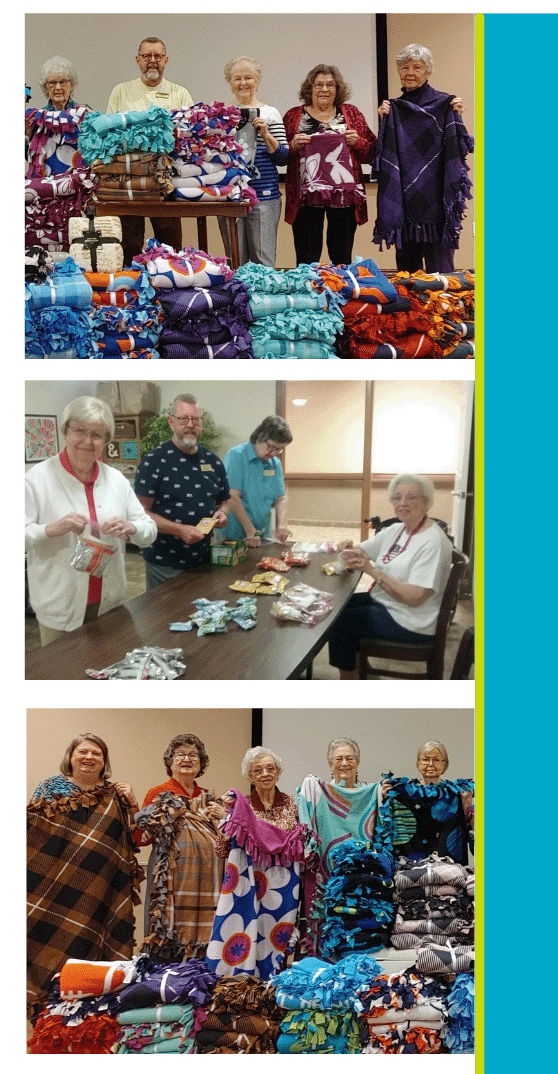
Ask #4: While we were filling the bags, the group discussed a recent newspaper article about children being kept in offices and hotels because there were no available foster homes or residential placements. The group asked, “What can we do?” I contacted DFPS and we decided to prepare hygiene bags for the children without placement (CWOP). Each bag contains soap, washcloth, shampoo, comb, deodorant, toothbrush, toothpaste, emery board, socks, and an oversized knit shirt that can be worn normally or used as a nightshirt. We also included hair ties and feminine supplies for the girls’ bags. We decided to change the name of our group from “Blanket Builders” to “Make A Difference” (M.A.D.) We see or hear something that upsets us, and we get “M.A.D” to make a difference.
Ask #5: Husband and wife volunteers, Norma and Ferrell, were going to miss a M.A.D. meeting due to concurrent dental appointments. I suggested that after their appointments, when they get the complimentary toothbrush, they ask for an extra toothbrush to contribute to the CWOP bags. The next day Ferrell proudly delivered four extra toothbrushes. Norma then handed me a bag with forty more.
Ask #6: Oak Park RLC is part of a national corporation of active retirement communities. When the M.A.D. meetings started showing up on the activity’s calendars, and photos of M.A.D. activities hit Facebook, other communities began asking what it was about. Now there are at least five other groups of retirees working to make a difference.
Ask #7: Oak Park RLC M.A.D. continues to build blankets (around 300 in 9 months), fill snack bags (over 300), and prepare CWOP hygiene bags (98 so far). When we made a recent delivery of CWOP bags, we were asked if we could help with Christmas. So, on October 22, National Make a Difference Day (we didn’t know there was such a day when we chose our name) we will ask our generous neighbors and families to help us make a bigger difference in the CWOP children’s lives.
M.A.D. has made a difference in our lives too. Our members are a collection of retired oil executives, teachers, journalists, military personnel, and a variety of other professions. Some of our members were adopted as children, other are adoptive parents and grandparents. All of us have “limitations” due to strokes, arthritis, dementia, traumatic brain injuries, depression, grief, macular degeneration, hearing loss, etc. Marilyn stated, “When we moved here, I felt like I had been warehoused, but now I know I can still make a difference”. Bernetta, who gave up quilting due to vision loss, is our chief knotter. She rediscovered her sparkle in M.A.D. and asks every day, “Do you have any more blankets?”
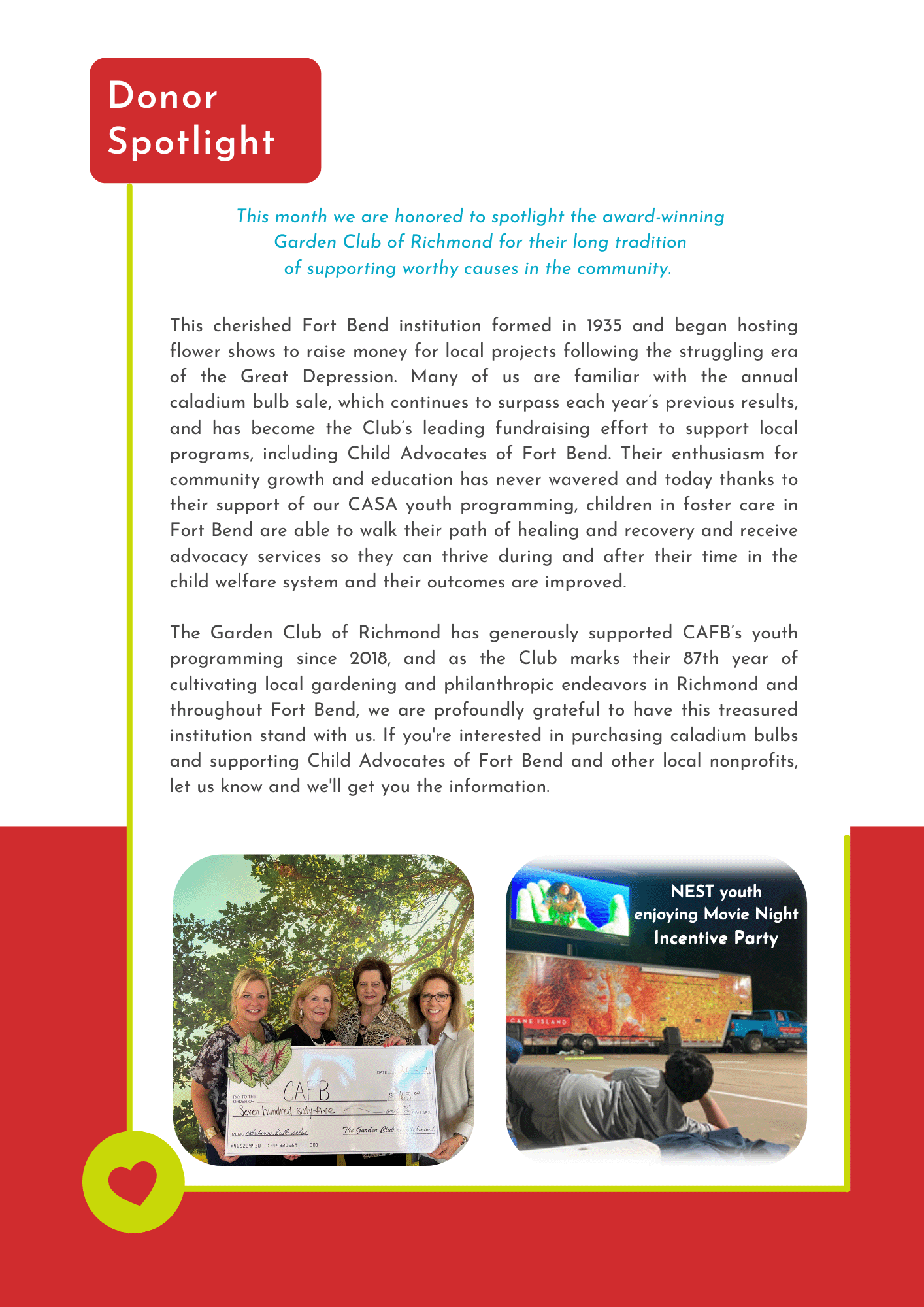
VOICES FOR CHILDREN
Transforming Lives Breakfast
Our 12th Annual VOICES FOR CHILDREN Transforming Lives Breakfast was a truly inspiring morning. We clapped to the spirited singing of the children’s choir, cried as we heard a story from an abused survivor, and our hearts were moved with an outpouring of support by our generous donors. It was a special morning and capped off months of planning by Suzanne Slavin, Development Officer, our Development team and all the staff here at CAFB. We are extremely grateful and appreciative of the outpouring of support from our generous donors who collectively donated $449,110!! Welcome to 41 new CIRCLE Donors who made a 5-year Sustainable Gift!
Special thanks to our Presenting Sponsor Exchange Club of Missouri City, Sponsors OCuSOFT, Inc., Smart Financial Foundation and St. Laurence Social Concerns Ministry, Sienna, Ken Kosub-Limelight Films and everyone who participated in our video – Fiona Remko, Aly Ferrante, Renee Johnson and April Kirby! Additional thanks to Nancy Olson, Dr. David Lanagan, Imperial Linen Service Inc., Kohls-Rosenberg, Phoenix Design Group, Deacon Tom Ruck from St. Laurence Catholic Parish, and Emily Reader and the Scanlan Oaks Elementary School Choir – Page to Stage!
We are grateful to our VOICES FOR CHILDREN donors – new and existing and the impact your sustaining support makes throughout each year.
If you are interested in joining our VOICES FOR CHILDEN Circle, please contact Suzanne Slavin at sslavin@cafb.org.
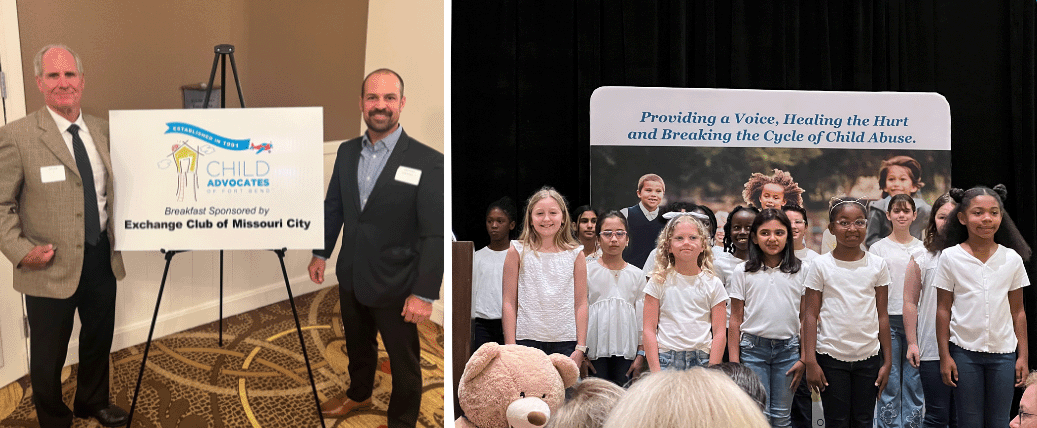
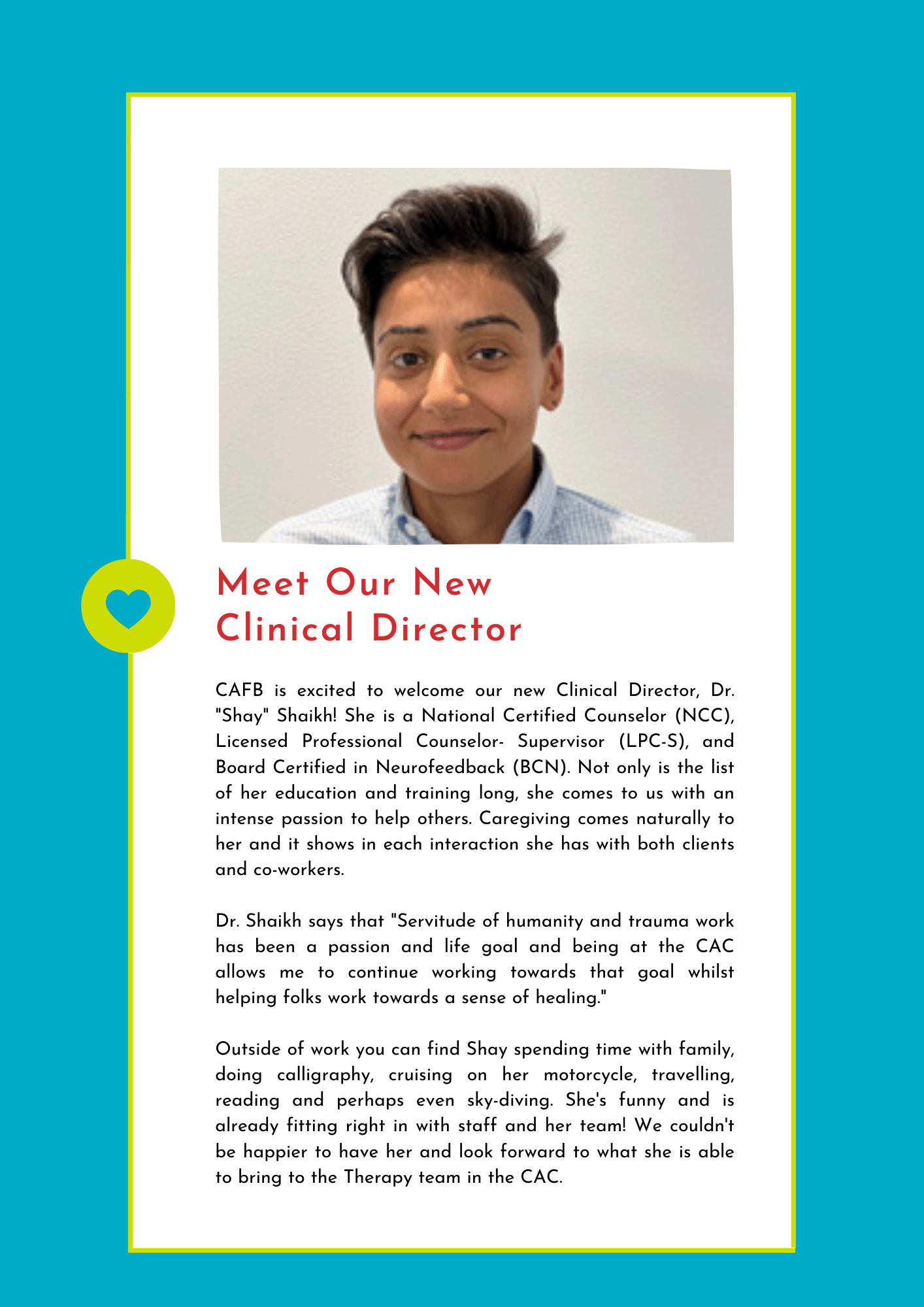
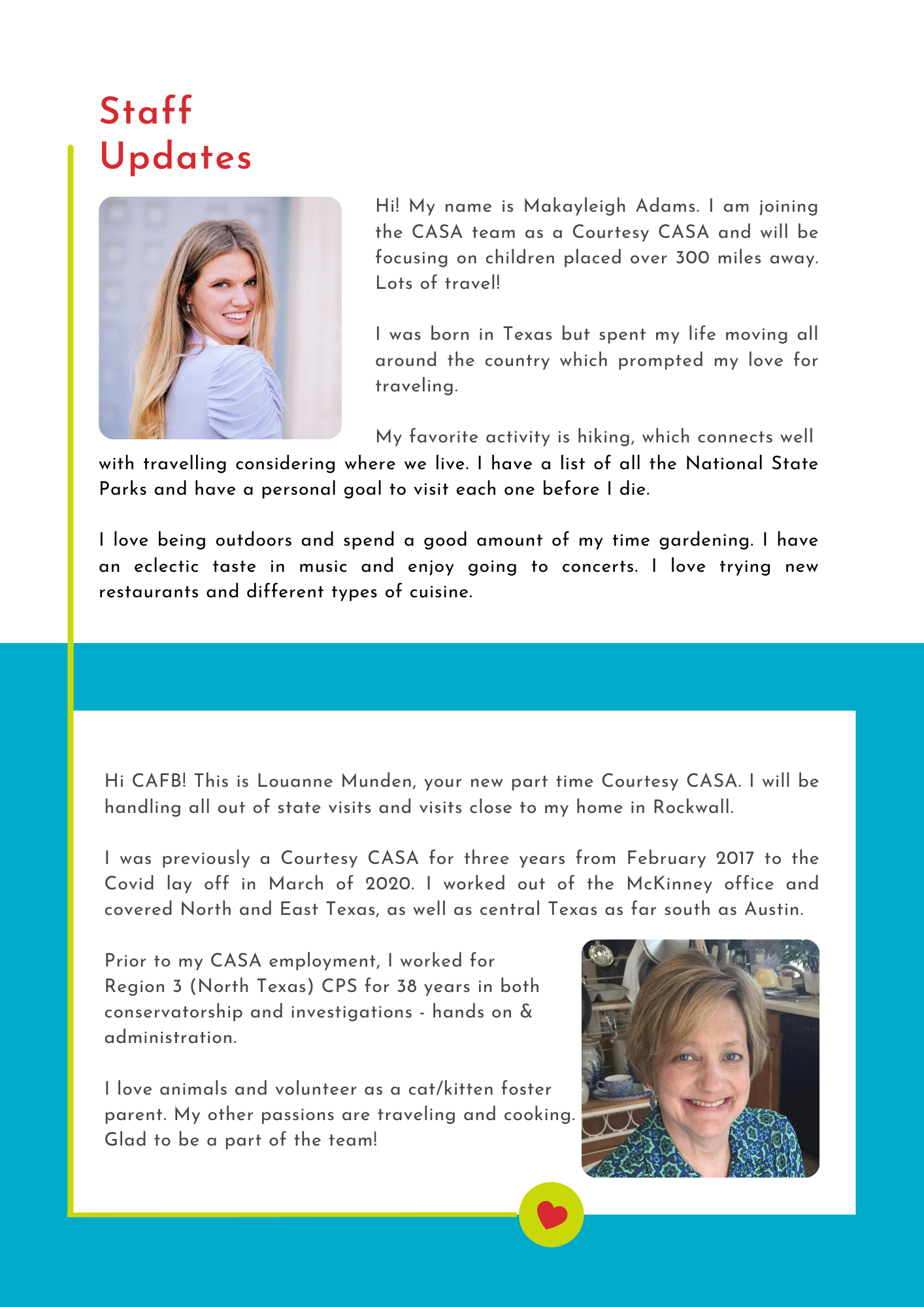
Needs & Opportunities
Written by Jen Brown
We have an immediate need for gift cards to grocery stores, Target, Walmart, Kroger, HEB and gas cards as well as Visa gift cards to cover basic necessities like food and gas for the families we serve. Gift cards at any denomination are greatly appreciated and can be delivered to our office Monday – Friday 8:00am – 5:00pm.
Our CAC is in need of small water bottles, blankets (size 50″x 60″), and snack bags with the following items: individual bags of goldfish, animal crackers and fruit snacks in each.
If you are interested in donating toys and gifts for the holidays, adopting a family or hosting toy drives for CAFB, please contact Jen Brown at Jbrown@cafb.org for more information, wish lists, Amazon gift lists and drop off dates.

Planned Giving is simply another way to meet your philanthropic goals in a thoughtfully planned, high impact way. Planned Giving is a way for you to integrate your personal, financial and estate planning by making lifetime or testamentary gifts. There are a variety of ways to do this. When the time is right for you, we would love to visit to discuss the values closest to your heart and explore how your different gift options could benefit vulnerable children for years to come, while also benefitting you and your family.
Here are 5 simple ways to make a legacy gift: Retirement Assets, Stocks and Bonds, Cash, Insurance Policies, Property
For more information on major or planned gifts please contact Lisa at lmoore@cafb.org or visit our website here https://www.cafb.org/donate/.
For details or more information on these events see the calendar on our home page at www.cafb.org OR contact Jennifer Brown at JBrown@cafb.org
